
Sokos Hotels is Finland’s largest hotel chain managed by the S-Group Cooperative (SOK) and Radisson SAS. The hospitality chain comprise 4 brands being: Original, Break, Solo, and Heymo. Each brand tailors for unique retreat experiences.
The Sokos Hotels’ content-rich website encapsulates 4 hotel brands and 2 loyalty program cards. The website needed a comprehensive overhaul to comply with design and more prominently accessibility best practices as mandated by the Finnish Authorities (webaccessibility.fi).
I was contracted to redesign the hotel/room reservations management system, while other parties were overhauling other parts of the hotel website for instance loyalty cards pages, user registration, and more.
After a preliminary audit, I noticed that modifying an existing room reservation involved numerous steps and touchpoints, resulting in a cumbersome user experience. Consequently, customers frequently contacted the helpdesk to quickly modify their reservations.
I solved challenges with:
Making / editing a reservation – a final designs examples from sokoshotels.fi
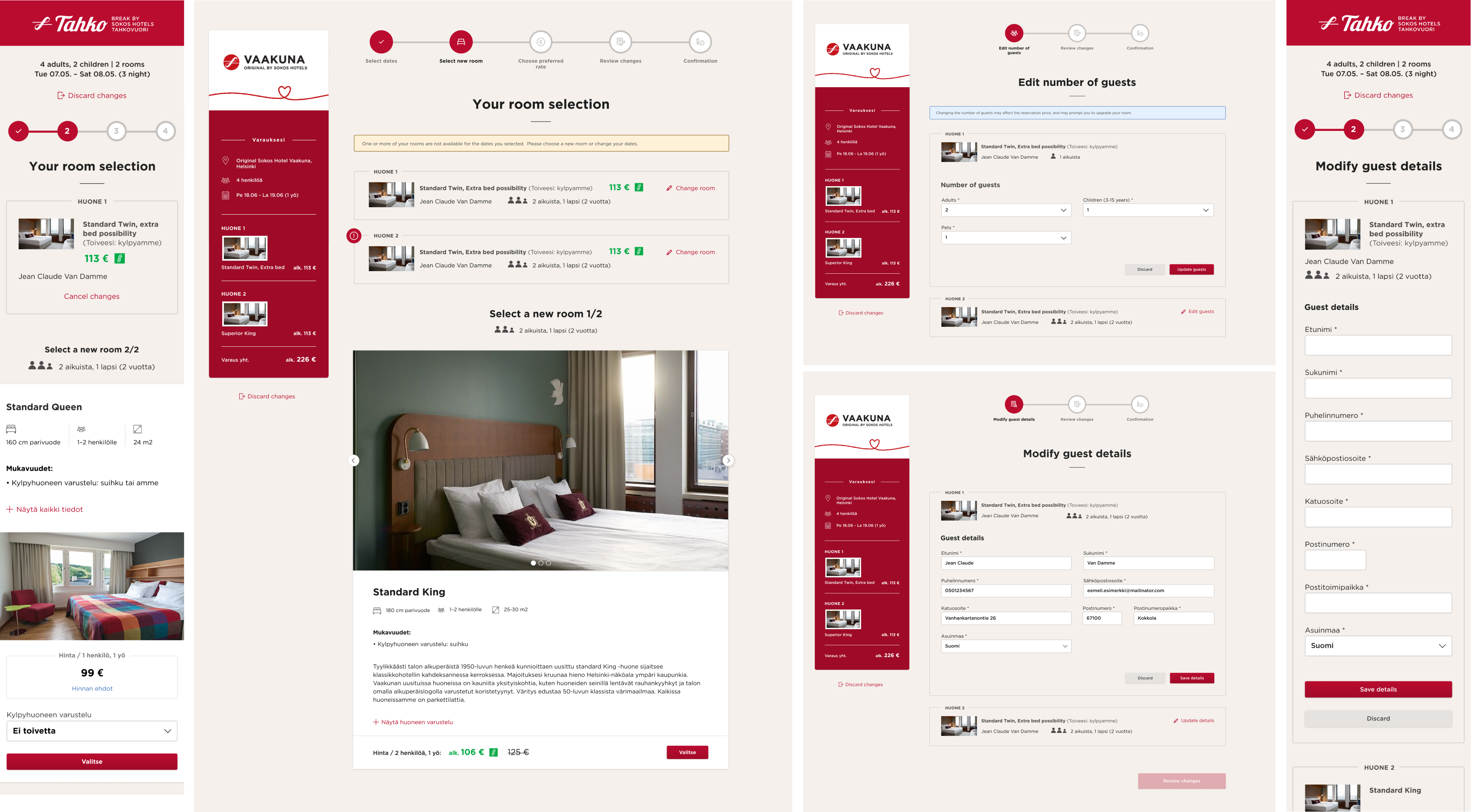
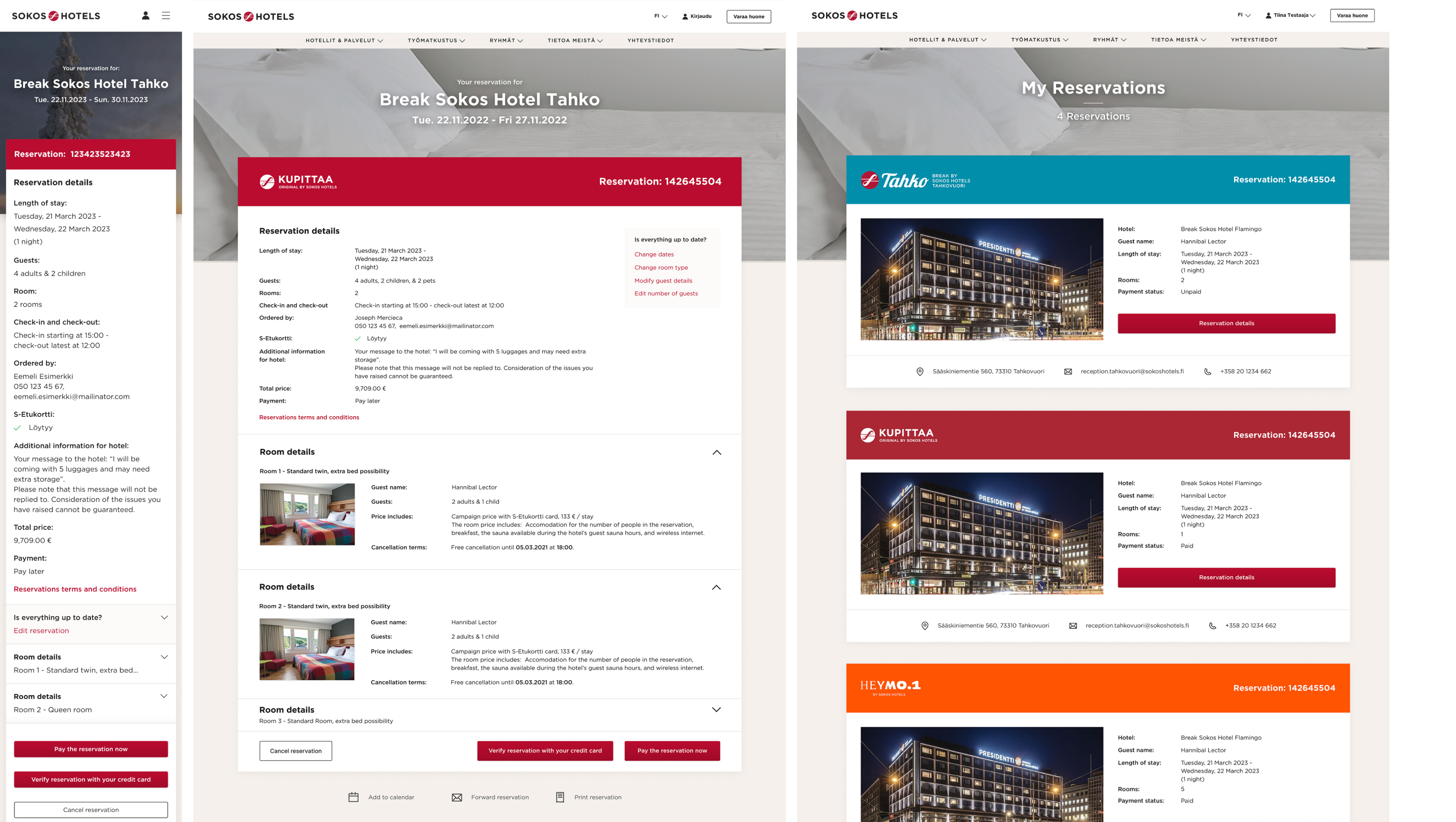
The process was a dynamic journey of ongoing alignment with stakeholders, addressing content and design challenges, accessibility issues, and CMS limitations while leveraging key performance indicators (KPIs). I conducted a competitive analysis to discover the strengths competing hospitality solutions have. Subsequently, I performed an exhaustive design audit leading to the discovery of numerous pitfalls on the (previous) website. Based on thorough research (discovery), we developed user stories that seamlessly integrated into our roadmap. This structured approach ensured that every step we took enhanced user-centricity and aligned with our overall goals.
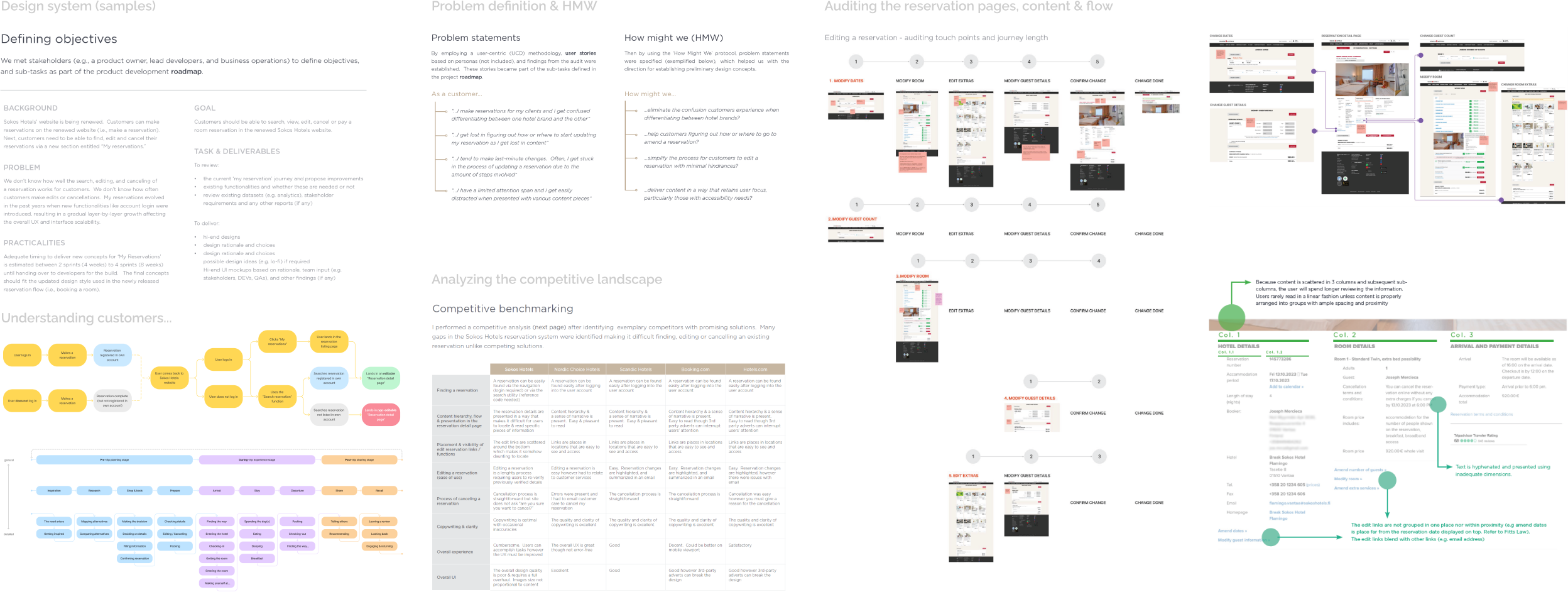
To ensure a consistent and streamlined design process, we worked on a comprehensive multi-brand, multi-platform design system for the S-Group owned brands, including Sokos Hotels. Collaborating closely with the Design System team and service designers, I reviewed, tested, and iterated the design system to guarantee its successful deployment within the Sokos Hotels design ecosystem. Additionally, I contributed to ensuring accessibility compliance through exhaustive reviews with stakeholders. This collaborative effort was pivotal in maintaining high standards and enhancing the user experience across all platforms.
The Design System was nominated as a finalist at the Finnish Grand One Gala event – Best Design System category. Information: 2023.grandone.fi/
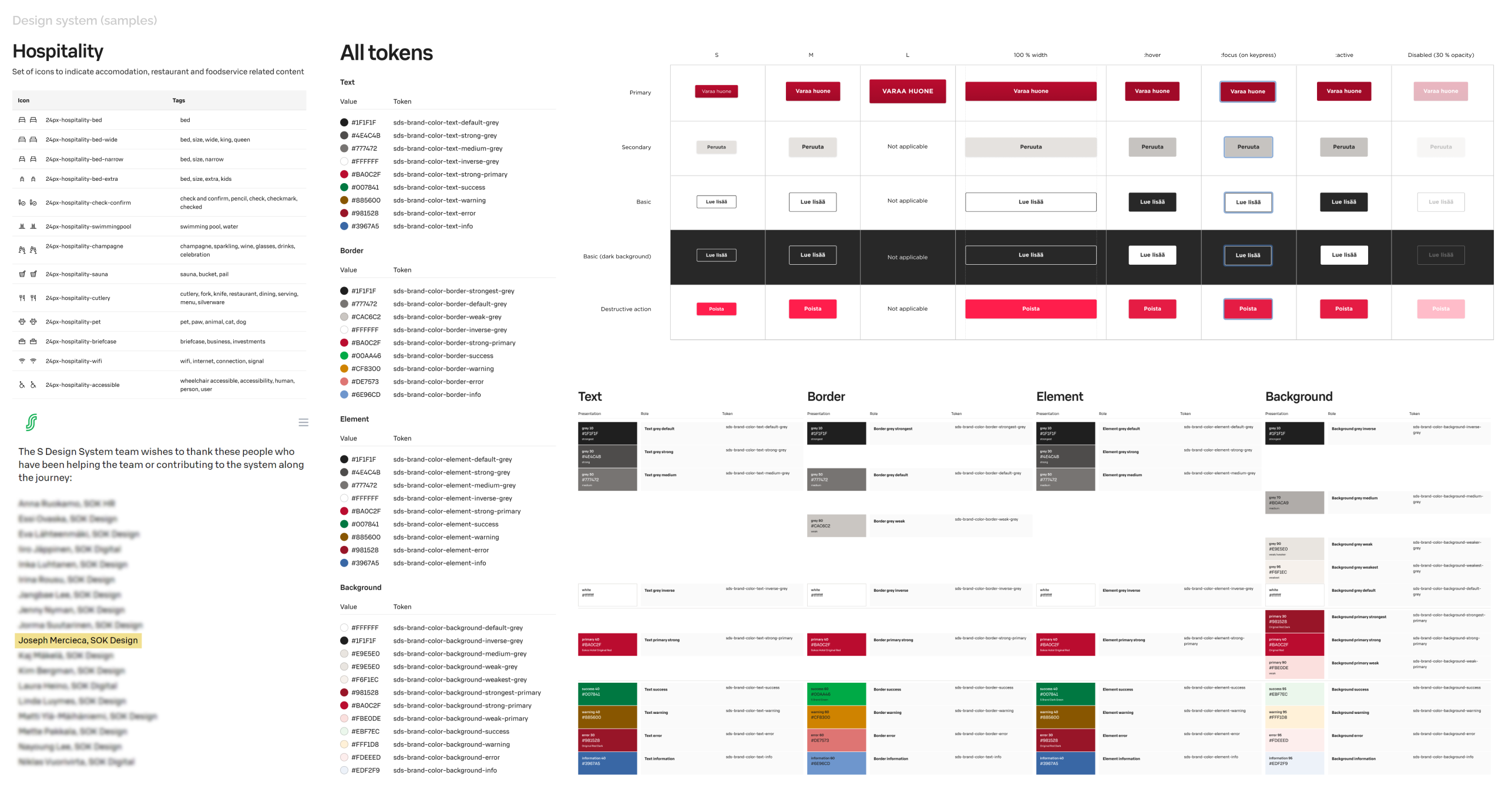
In the original design, customers had to navigate through numerous steps and interact with various touchpoints to amend an existing reservation, creating a cumbersome experience. To address this issue, I took the following actions:
Spoiler: The outcome was beneficial because customers found it easier to to amend existing reservations without needing assistance from helpdesk.
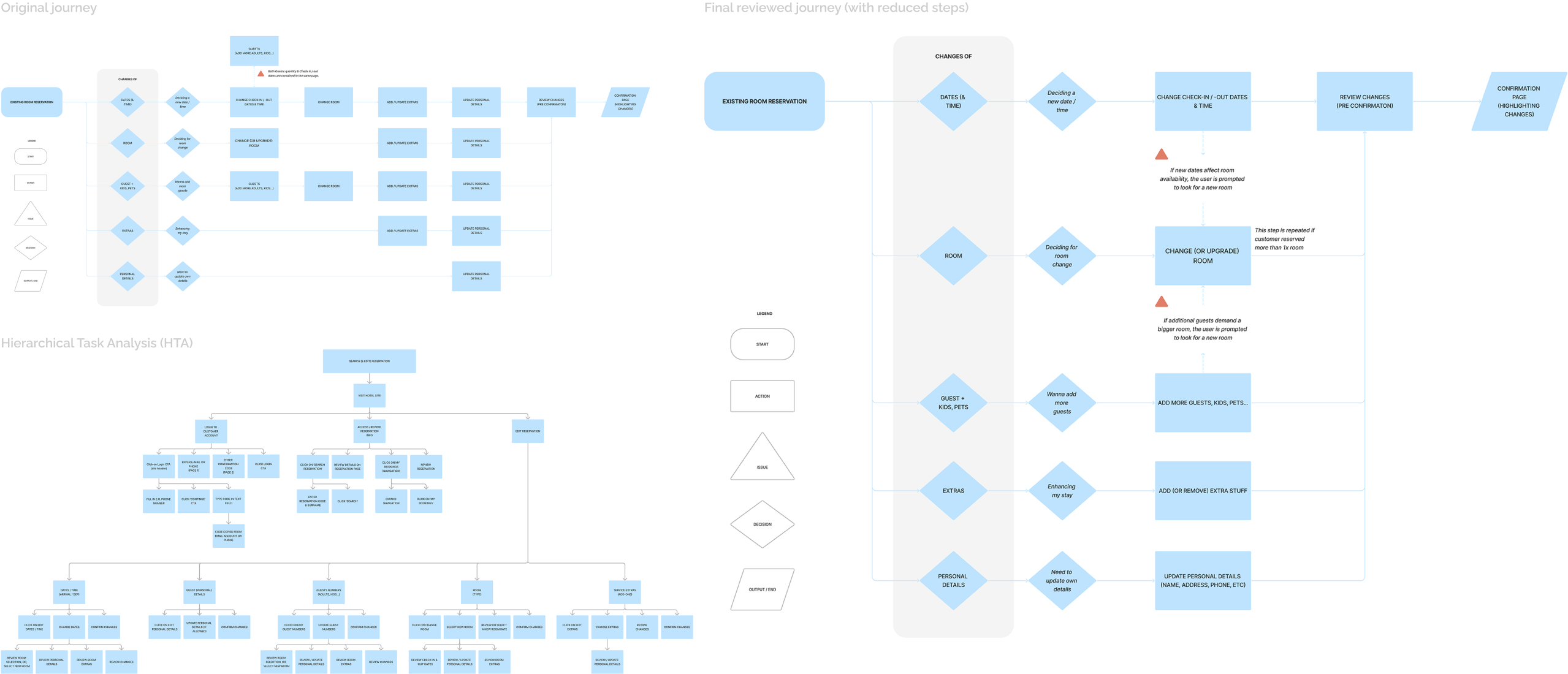
Finally, we produced a series of high-fidelity UI designs that adhered to the revised corporate branding and styling requirements approved by stakeholders and key decision-makers. Utilizing reusable components from our comprehensive design system, we crafted pages that not only reflected the updated brand identity but also enhanced efficiency and consistency. These designs underwent rigorous testing to ensure full compliance with accessibility criteria (WCAG, Level AA), guaranteeing an inclusive and seamless user experience for all.
Itinerary page – former vs current design
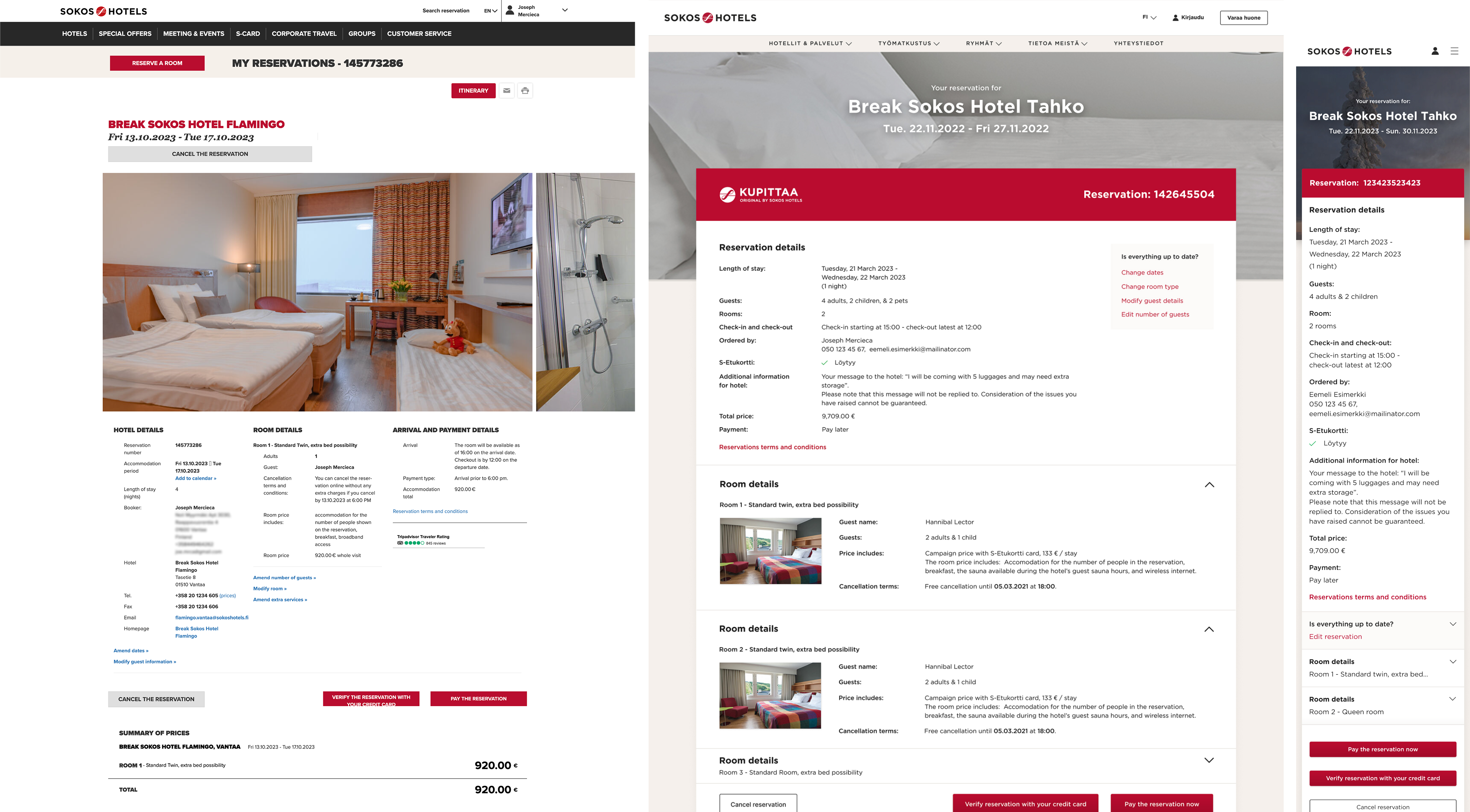
Reservation listing page – former vs current design
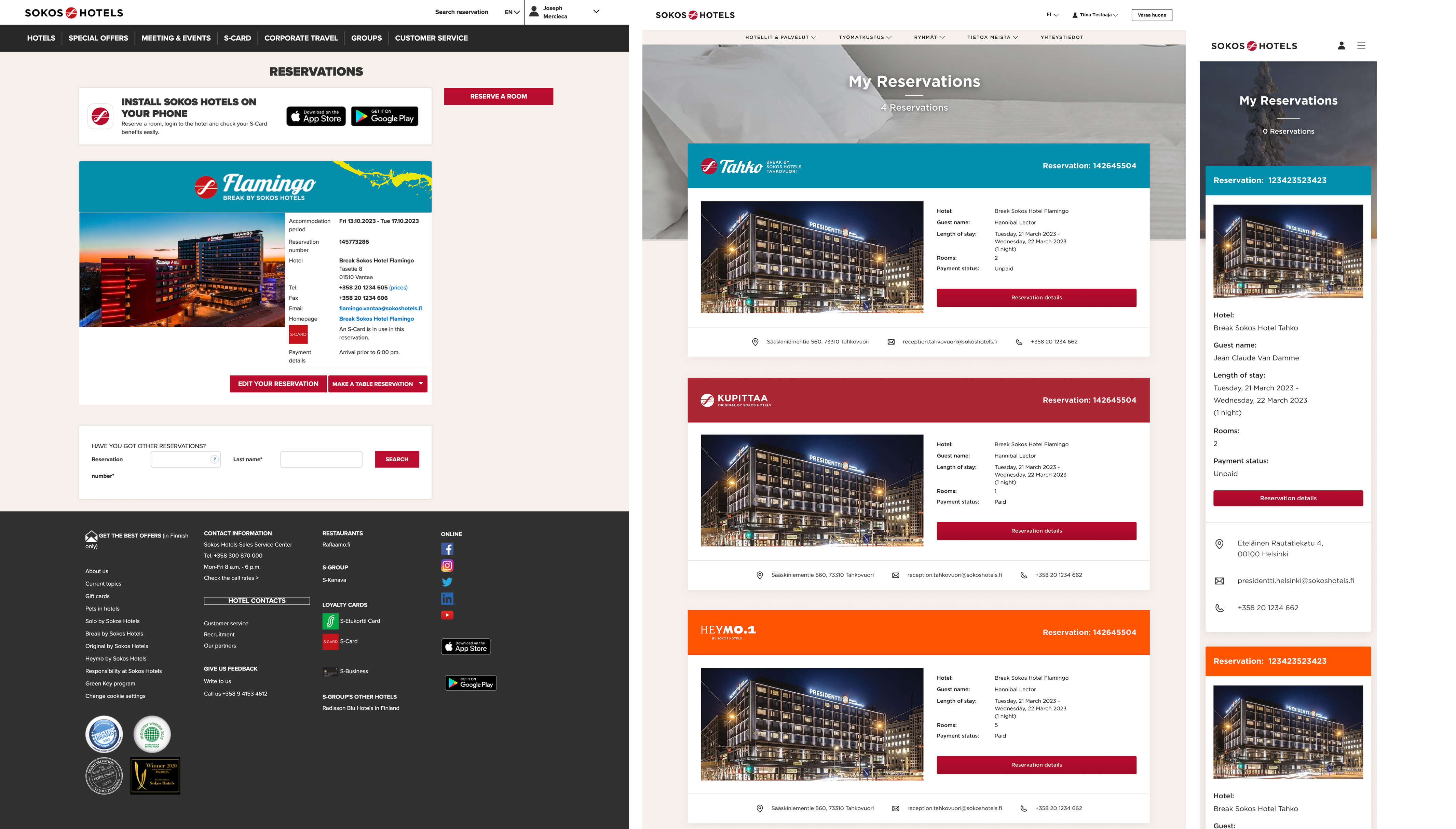
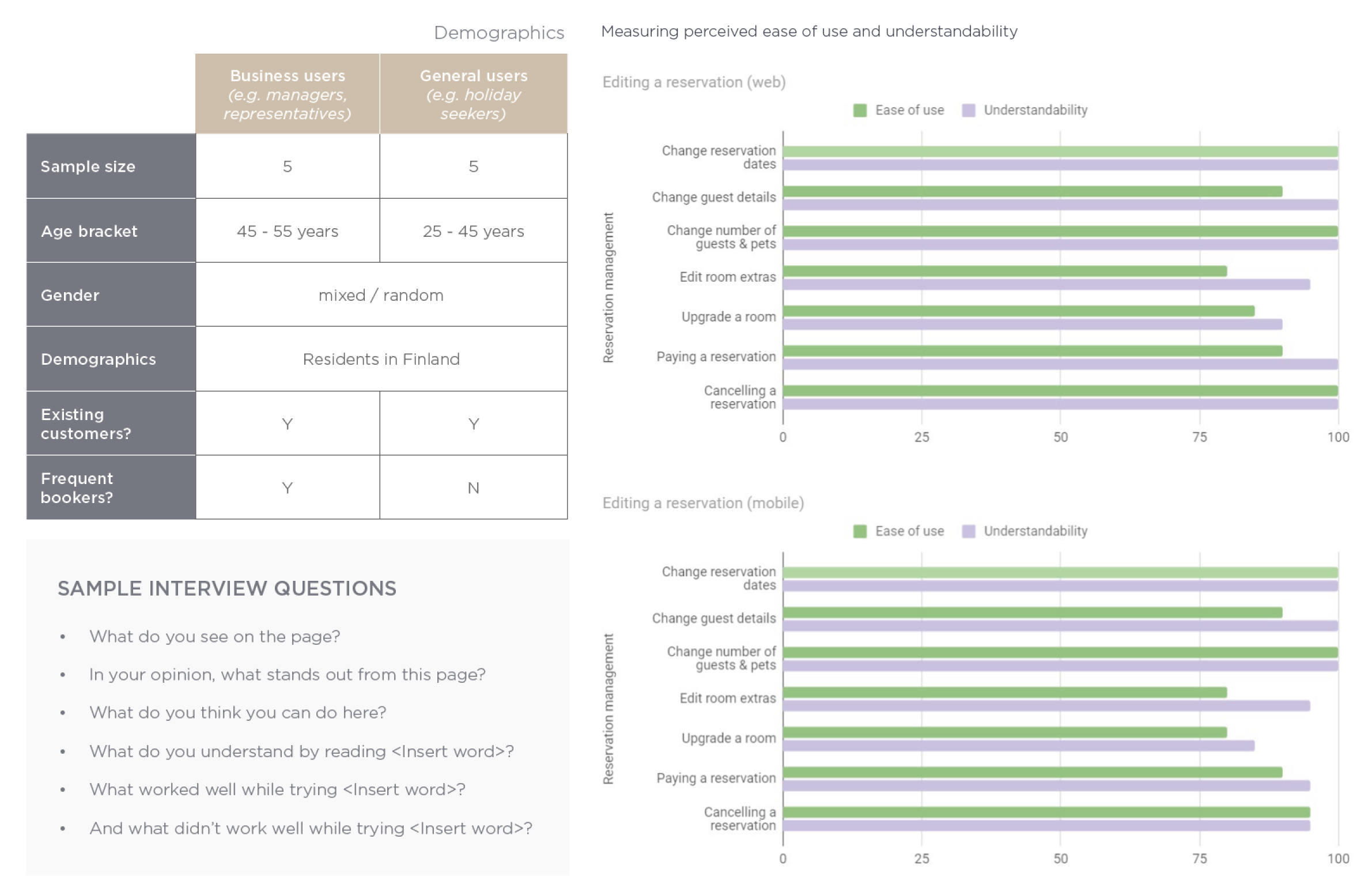
The redesigned reservation management pages and journeys were evaluated among 10 participants, a few comprising loyal (business) customers.
Overall, the participants overwhelmingly favored the new designs for their appealing visual quality, content organization, improved architecture, and copywriting. Additionally, we noticed that participants could amend existing reservations easily and faster after eliminating undue steps.
After launching the amended journeys alongside redesigned reservation management pages, the following were observed: